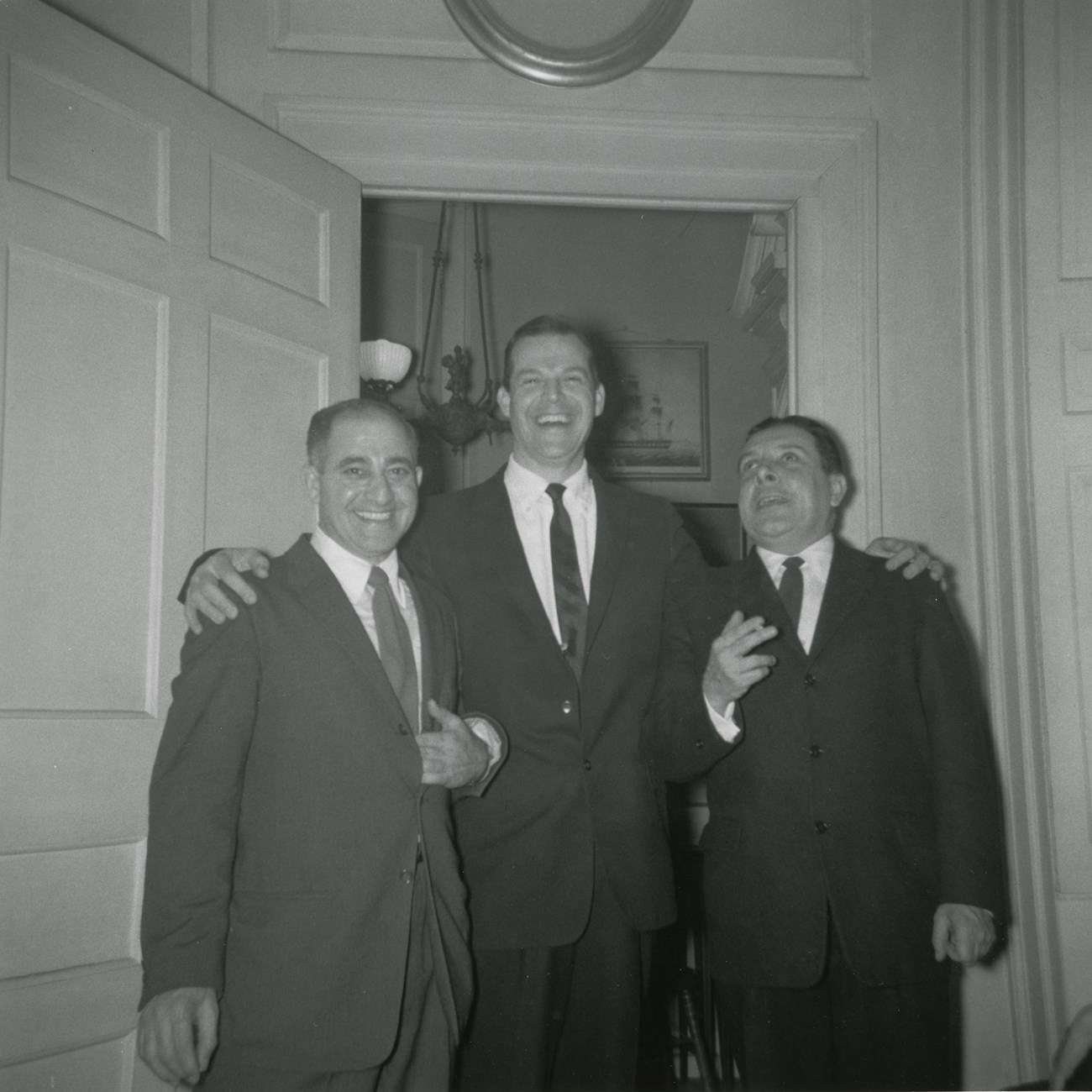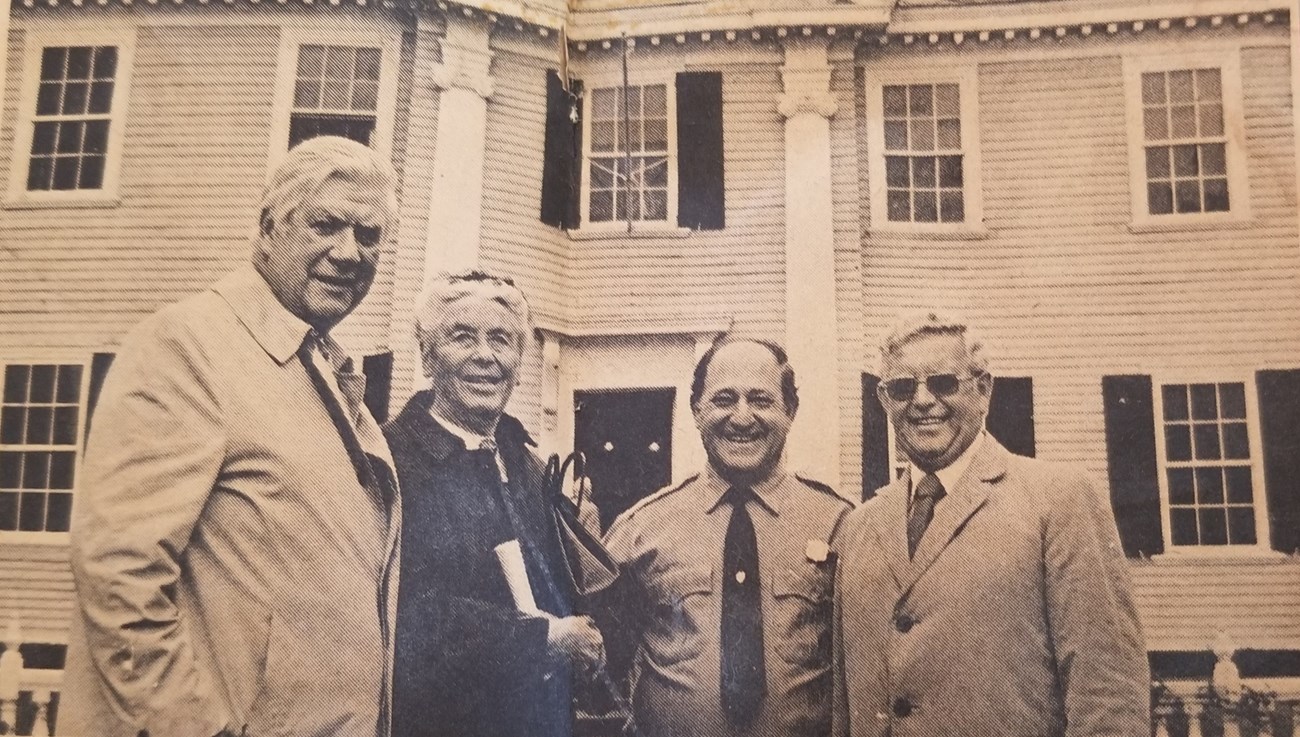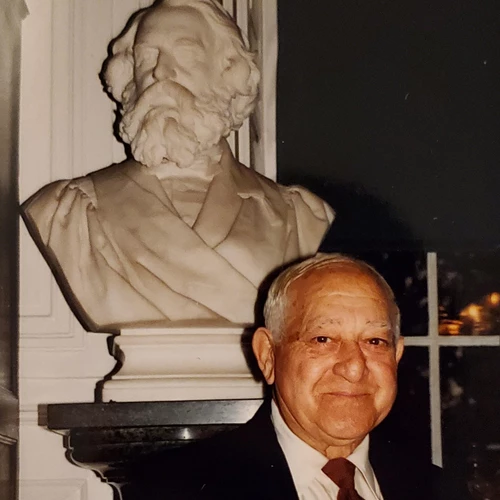Last updated: May 29, 2025
Article
A Legacy of Stewardship: The Story of Frank Buda and the Longfellow House
Longfellow House-Washington’s Headquarters National Historic Site has long been a beacon of preservation and stewardship, embodying a rich history as both the home of the celebrated poet Henry Wadsworth Longfellow and his family in the 1800s and as General George Washington’s first major headquarters of the American Revolutionary War in 1775-1776. For generations, dedicated residents, staff, and volunteers have worked to protect and share the house’s legacy. Among the property’s most dedicated stewards was Frank Buda (1915-1997).

Courtesy of the Buda Family
Frank Buda’s connection to the property began in 1933, when he joined the staff of the Longfellow House as an 18-year-old. Born to Italian immigrant parents, Buda grew up in the vibrant East Cambridge, Massachusetts, community. His father, Carmelo Buda, had worked at the Longfellow House as a gardener since arriving in the United States in 1913, laying the groundwork for the family’s long connection to the property.
Frank Buda’s keen interest in history quickly set him apart as an employee. Under the mentorship of Henry Wadsworth Longfellow Dana, grandson of the poet and a key figure in the house’s preservation, Buda served as a chauffeur and, along with Dana and his personal secretary Thomas de Valcourt, assisted with organizing the Longfellow family papers and preparing lectures.

Longfellow Family Photograph Collection, Longfellow House-Washington's Headquarters National Historic Site.
When Dana passed away in 1950, the poet’s granddaughter Anne Longfellow Thorp appointed Buda to oversee the daily operations of the house as an employee of the Longfellow House Trust. Already well-versed in the history and contents of the house, Buda took on his new role with dedication. He became the face of the Longfellow House for visitors, sharing its stories and supporting its upkeep, while de Valcourt managed the property’s collections and access for scholars.
Buda’s resourcefulness was instrumental in sustaining the house. In addition to interpreting the site for visitors, he generated revenue for ongoing preservation work through tour fees, merchandise sales, and boarder fees. Two of his children, Philomena and Frank, joined him in giving tours as volunteers, highlighting the Buda family’s collective dedication to the Longfellow House’s preservation.
Buda’s stewardship extended beyond daily operations. Among his many contributions, Buda initiated a summer concert series in the late 1950s, a tradition that continues today. In the late 1960s, he championed the Longfellow Family Trust’s plans to transform the house into a National Historic Site. Drawing on his long friendship with Congressman Tip O’Neill, Buda advocated for federal support. His efforts contributed to the preservation of the house in public trust for generations to come.

Courtesy of the Buda Family
In 1972, the National Park Service assumed stewardship of the Longfellow House. Buda became a National Park Service employee, serving as Supervisor of Interpretation and Chief of Visitor Services, and continued to care for the house that had become his life’s work. In total, Frank Buda devoted 53 years to the Longfellow House, spanning the ownership transition from the Longfellow House Trust to the U.S. National Park Service, and making him the longest-serving employee in the house’s history.
Frank Buda’s story is a testament to the power of dedication and stewardship. Through decades of service, he preserved not only the Longfellow House as a building, but also the history it holds. His legacy lives on today in the Friends of Longfellow House-Washington’s Headquarters’ Frank Buda Memorial Fund (est. 1997) and in the vibrant tours, exhibits, and programs that continue to connect visitors to the enduring significance of Longfellow House-Washington’s Headquarters National Historic Site.

I consider this my second home... Because I love this place. I grew up with it, and my children did.
Image credit: NPS Photo
This article is based on research by Kimberly Norton, Ph.D., granddaughter of Frank Buda and recipient of the 2023-24 Friends of Longfellow-Washington’s Headquarters Stanley Paterson Research Fellowship. Supporting documentation includes materials from the Longfellow House-Washington’s Headquarters National Historic Site Archives (Longfellow House Trust and Hill & Barlow Records collections), oral history interviews with Frank Buda’s living children and his son-in-law, and a 1994 interview with Frank Buda.
